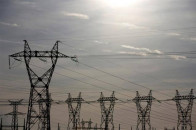K-P population poses threat
Food, shelter, job requirements will increase ten folds if awareness does not increase

Another World Population Day, which highlights the adverse consequences of a rapidly growing population, has come and gone but few lessons have been learnt by those in power about the magnitude of problems that await Khyber Pakhtunkhwa (K-P).
With a population growth rate of 2.89 percent, K-P’s population is expected to hit 40 million by the end of this year - a nearly 126 percent increase in the past two and a half decades.
However, there seems to be a lack of attention on how the province will provide for such a mammoth population in terms of resources, given that 1 out of 4 children in the country under the age of 5 are stunted and 1 in 3 are underweight, as per a National Nutrition Survey of 2018.
Along with the food scarcity challenges the country is facing, good healthcare seems to be absent as well. According to some estimates, there are 11,000 maternal deaths annually in Pakistan and the infant mortality rate is concerning as well with 62 infants out of 1,000 live births dying before reaching their first birthday. In light of the country’s overall statistics, The Express Tribune asked Director General Population Welfare K-P, Ayesha Ihsan, about a breakdown of K-P’s numbers and learnt that 1,900 maternal death occur annually, 53 infants out of 1,000 live births die before reaching one year of age, and 23 percent are facing malnourishment. Commenting on the problems that await the province, Ihsan remarked, “the rapidly increasing headcount of K-P is a wake up call for all as the situation is quite alarming.”
Ihsan ringing the alarm bells is not misplaced as according to a Pakistan Demographic Health Survey (PDHS) Report, at K-P’s current growth rate it will need to provide 14 million more jobs,14,000 more primary schools, and 2.3 million more houses by 2040.
When asked what her department was doing to disseminate such information and curb the rapid growth, Ihsan informed that the department would soon establish 380 new centres for population control across K-P. “This is in addition to the 682 centres, 41 Mobile Service Units, and 35 Fertility Control Centres that exist in the province.”
However, Ihsan refrained from mentioning how soon but instead quoting the PDHS report, said that a glimmer of hope exists in the form of K-P’s Contraceptive Prevalence Rate (CPR) rate which increased from 25 percent in 2006 to 31 percent in 2018. “The Total Fertility Rate, however, (TFR) has only declined by a few decimal points as it used to be 4.3 percent in 2006 and was recorded at 4.3 percent in 2018.”
Ihsan also added that population control was not solely the department’s job and that the “clerics, media, and civil society at large should create awareness among the masses to avoid a population growth catastrophe.”
Professor Dr Abdur Rehman, who teaches Islamic Studies at the Sheikh Zaid Islamic Centre in Peshawar, disagrees. “The clerics, media, and civil society are already doing their job. It is the government which makes tall claims and then fails to implement its policies.”
Published in The Express Tribune, July 27th, 2022.



















COMMENTS
Comments are moderated and generally will be posted if they are on-topic and not abusive.
For more information, please see our Comments FAQ